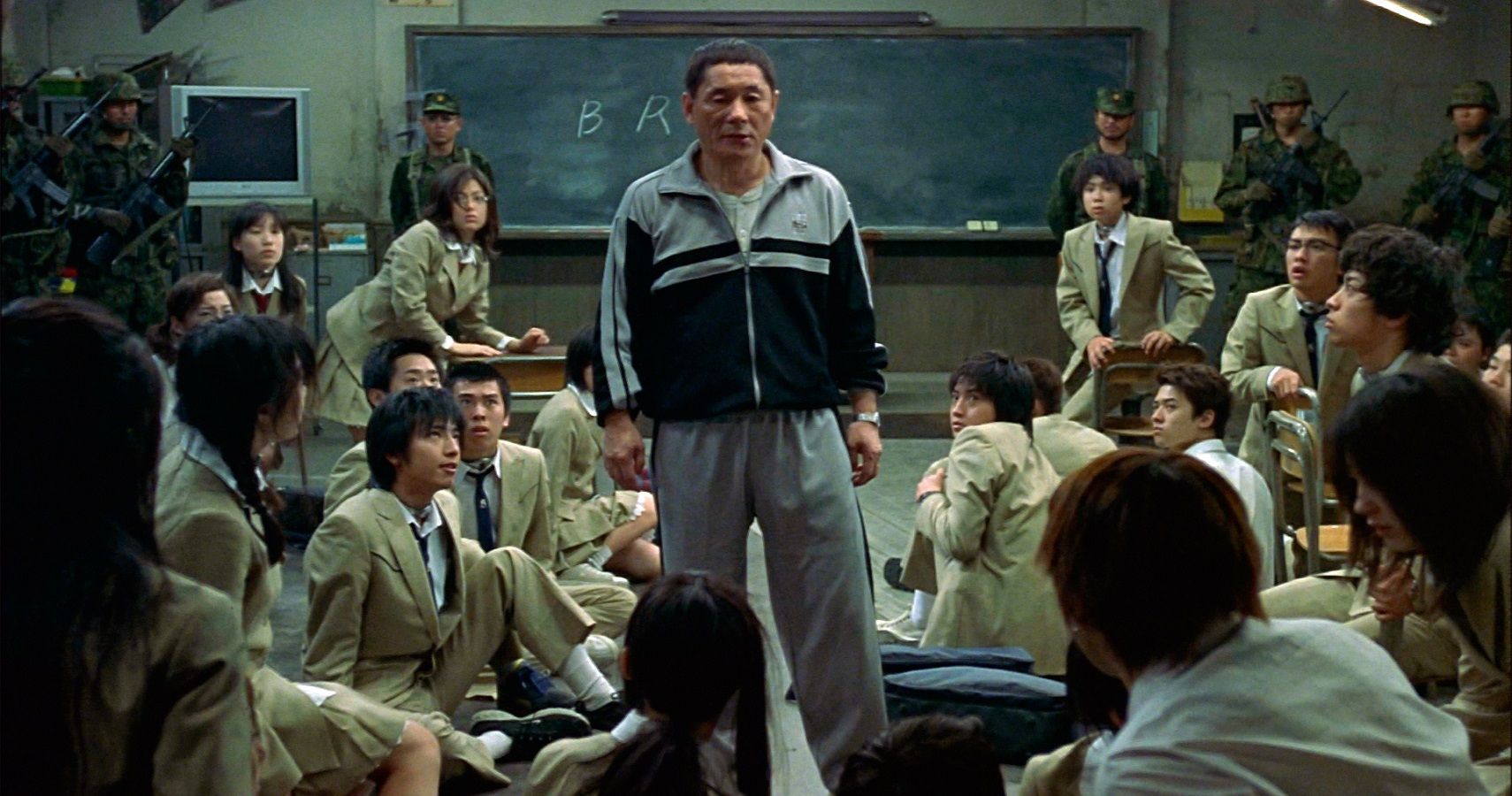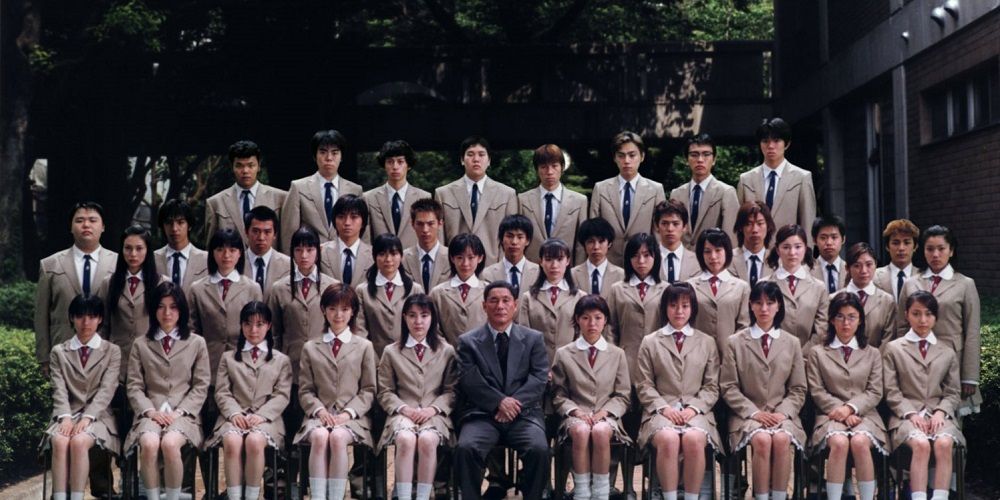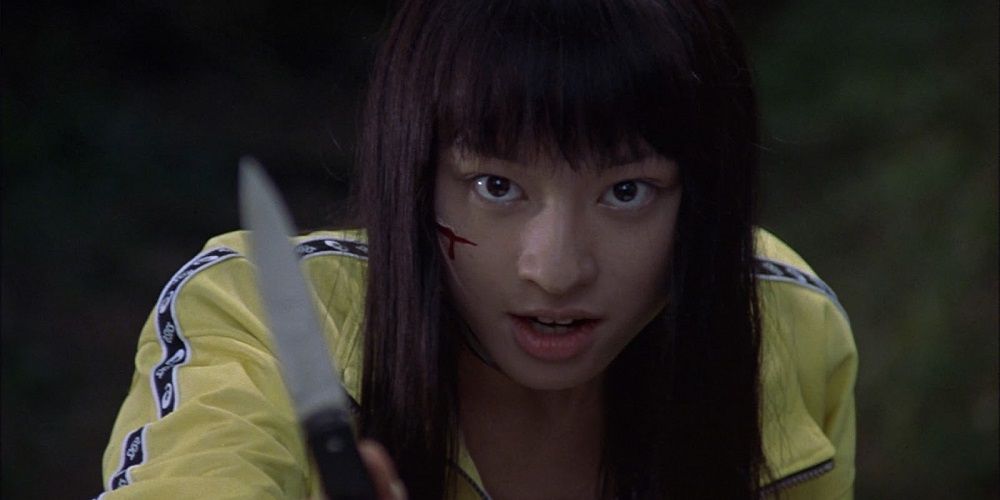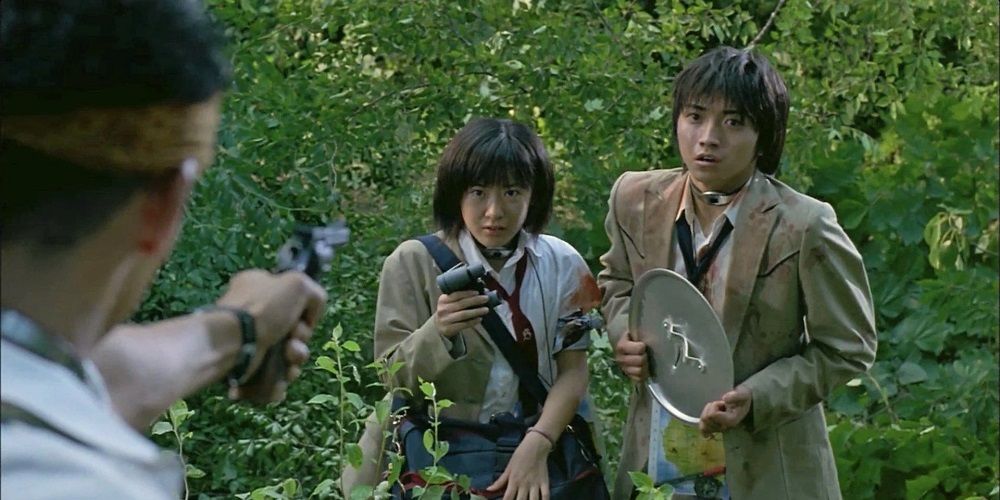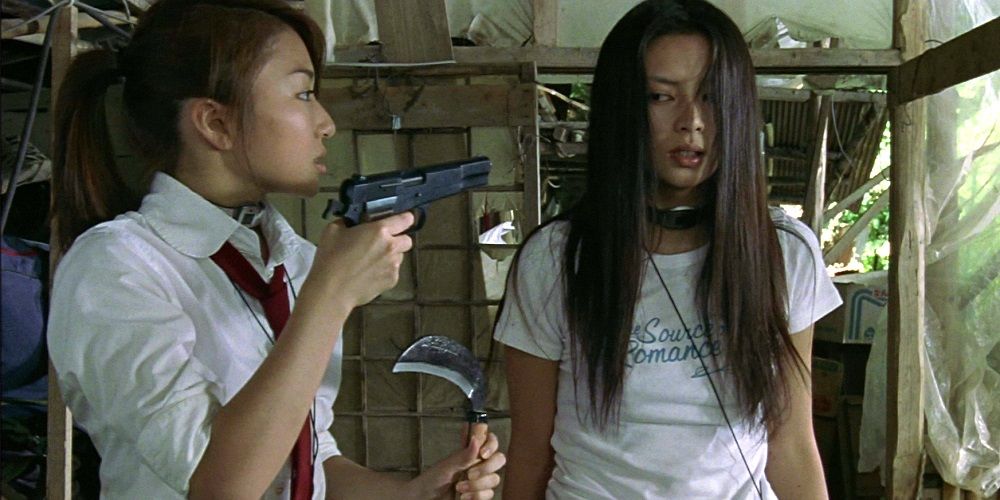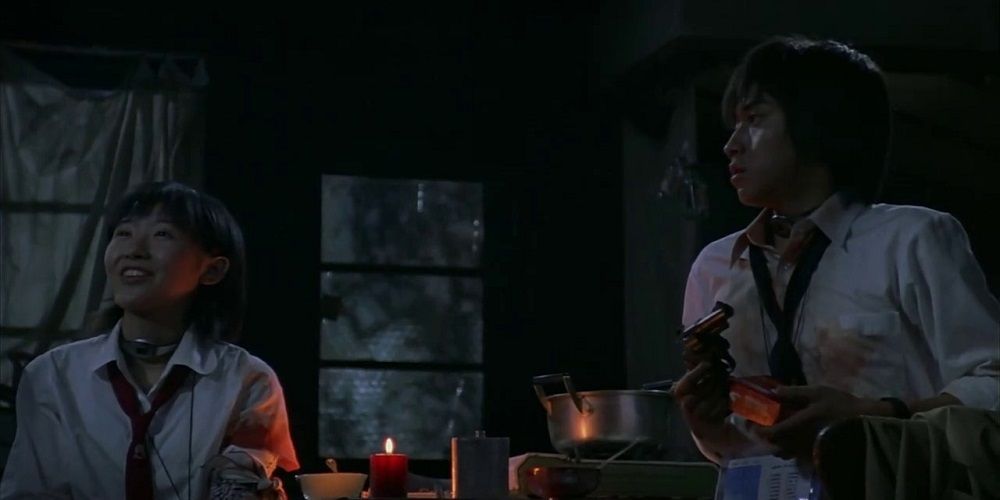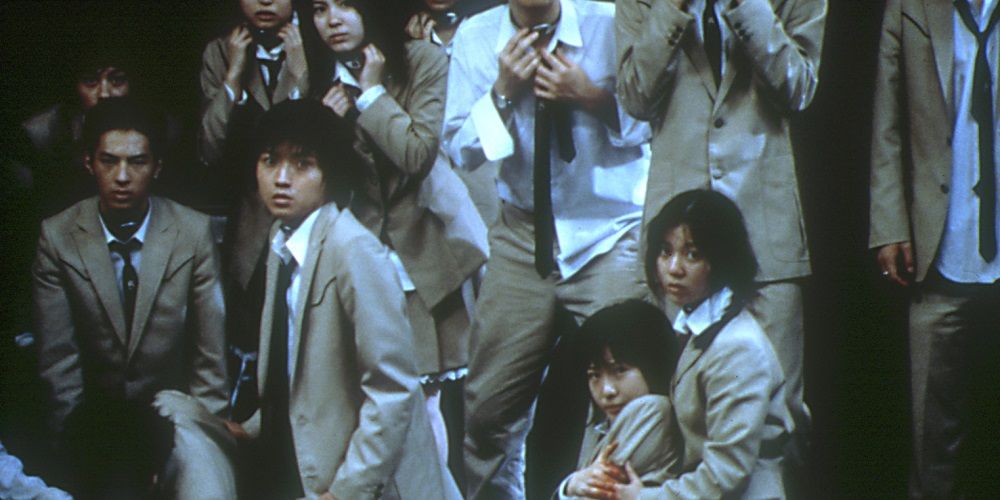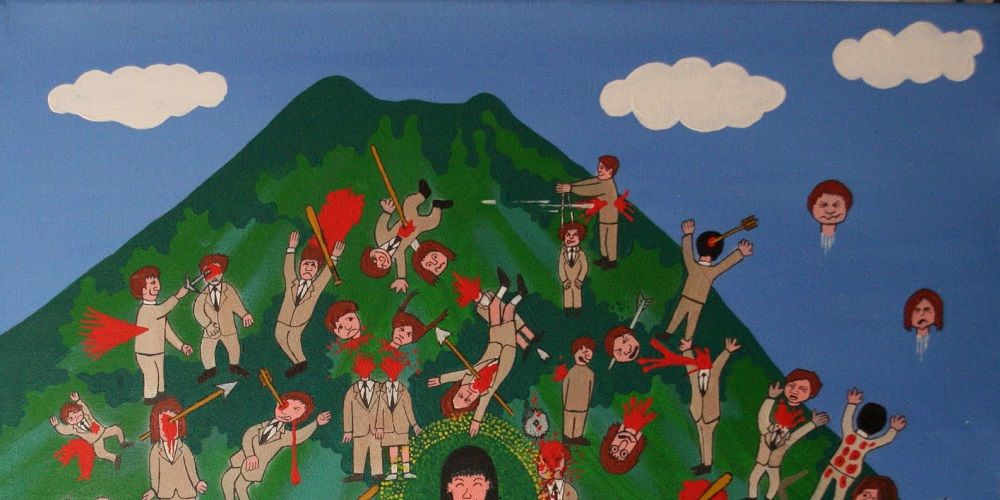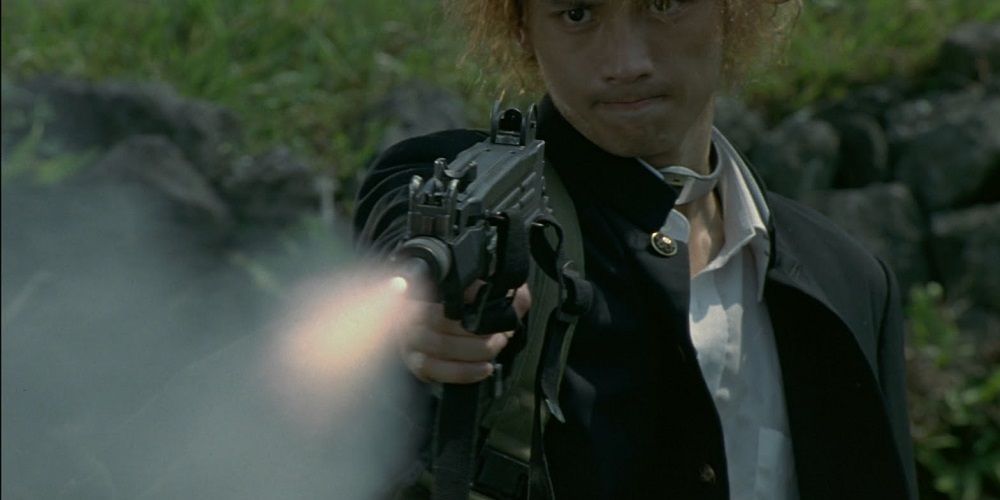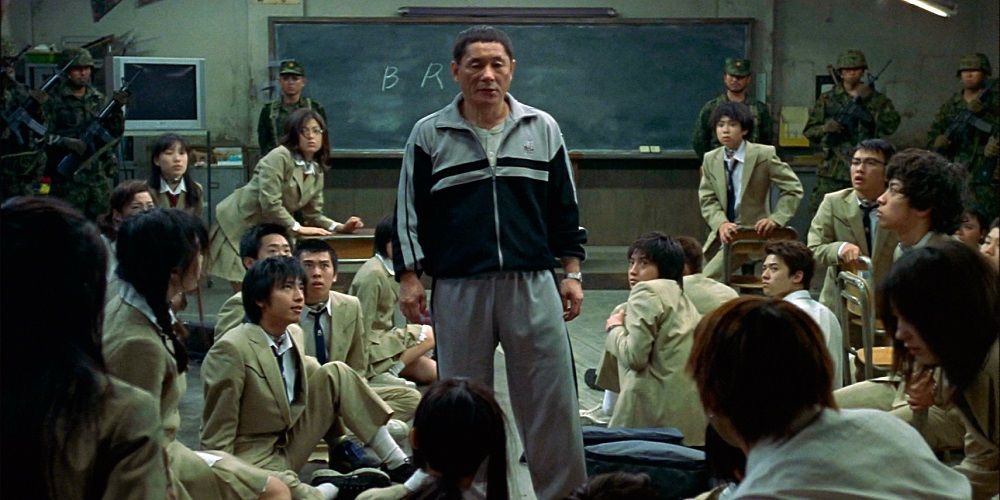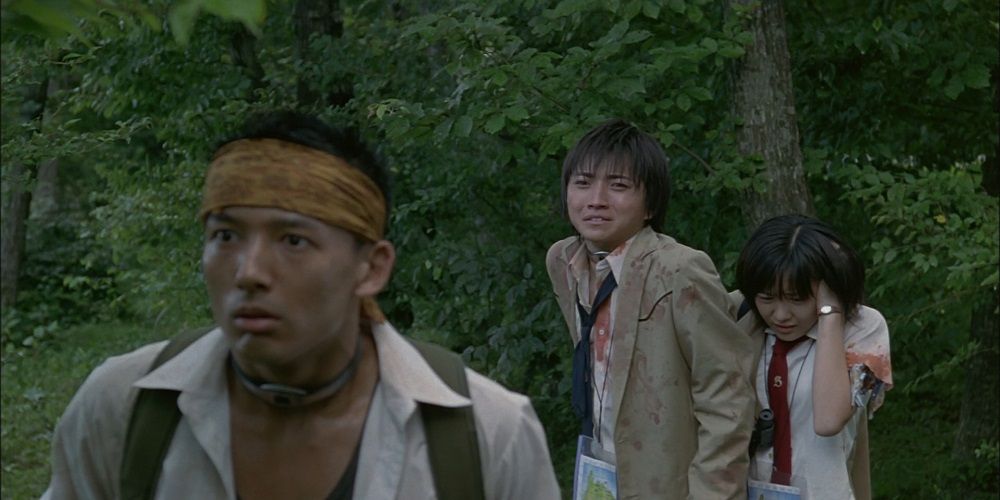Kinji Fukasaku's Battle Royale is one of the most violently disturbing and controversial movies ever made. The story about a class of 42 ninth-graders legally sanctioned to engage in a barbarous fight to the death on a remote island for three days features some of the most extreme and alarming acts of violence ever committed to celluloid.
Released shortly after the notorious Columbine massacre in the U.S., Battle Royale drew harsh criticism for its depiction of intense violence perpetrated by high-school students. In the years since it's release, the movie has become a beloved cult classic and a highly revered Japanese horror hit. As the film celebrates its 20th anniversary this December, here are 10 things you didn't know about Battle Royale.
Japanese Censorship
Prior to production on the film adaptation, the Japanese Parliament attempted to ban the Koushun Takami novel on which it is based. When the government failed to do so, the censorship was aimed at the film version.
When Japanese officials failed to ban the film in the country as well, both the film and novel became immensely popular. The attempt to stifle the release of the material had the opposite effect on Japanese citizens, as Battle Royale went on to become one of the 10 highest-grossing movies in Japanese history.
Banned In Several Countries
Although Japan failed to censor Battle Royale in its homeland, other countries were more successful in limiting viewership. For example, the movie is banned on South Korea TV for being far too graphically violent.
In 2006, the film was indexed for being a youth-endangering media by Germany. As a result, nobody was allowed to sell copies of the film in Germany and outstanding copies were confiscated by the police. In 2013, the court case was appealed and overturned. In 2017, the film was taken off the index and confiscation list. The film was not banned in the U.S., but it took nearly a decade for it to be released due to licensing issues.
Locations
Battle Royale was filmed all throughout Japan, using several locations in the process. The street sequences were shot in Shibuya-ku, Tokyo, many exterior scenes were filmed at Shukugawara Dam, Tama River, Kawasaki-shi, Japan.
For the remote setting, filming was done on the real island of Hachijo-Kojima, an uninhabited isle located in the Izu chain, hundreds of miles south of Tokyo. Hachijo-Kojima is not only used for the island at the end of the film, but also for the shots of the students on the shoreline.
No Stunt Doubles
More than 800 actors auditioned for the teenage students in Battle Royale. To prepare for their roles, six months were spent doing physical tests with the actors, while doing intensive script-readings.
But the most shocking thing about the actors is that not a single person used a stunt double on the set of Battle Royale, not even lead actress, Tatsuya Fujiwara. Moreover, only two actors were fitted with squibs while filming (fake blood packets), Takayo Mimura, and Takeshi Kitano.
Day For Night
In a method not uncommon on many film productions, several nighttime scenes in Battle Royale were actually shot during the daytime.
RELATED:
One example of the day-for-night technique includes the scene in the bungalow as Kawada, Noriko, and Shuya are accosted by Kiriyama. The scene was filmed in broad daylight and was subsequently color-tinted in postproduction to make it appear as if it were nighttime.
Extra Footage Shot After Initial Release
While it's fairly common for filmmakers to shoot day-for-night, filming extra footage after the theatrical release is anything but typical. But that's precisely what director Shinji Fukasaku did on Battle Royale.
For the special edition DVD release, new scenes were filmed after the theatrical cut of the movie. Eight minutes of footage was added into the cut, including three epilogues, two flashbacks, extra shots of the lighthouse following the shootout, supplemental CGI, and extended shots inside the classroom.
Student Painting
The iconic juvenile painting of the class of students massacred on a hillside was created by none other than Takeshi Kitano, the actor who portrays Kitano-sensei in the film. Kitano-sensei depicts Noriko (Aki Maeda) as the victor in the painting, which he presents to her and Shuya when they enter the classroom.
In another real-life connection, when Kitano-sensei speaks to his daughter on the phone, he's really conversing with Aki Maeda's sister, Ai Maeda.
10th Anniversary 3D release
For the 10th anniversary of the film on November 20, 2010, the film was reformatted for a 3D release. The postproduction conversion was supervised by director Kinji Fukasaku's son, Kenta.
In February of 2011, the 3D version of Battle Royale was screened at the Glasgow Film Festival in Scotland. Later in 2011, a release of the 3D cut was planned in the United States but was canceled for unknown reasons by years end. A non-3D Blu-ray DVD of Battle Royale was finally released in the U.S. in 2012 courtesy of Anchor Bay Entertainment.
Sequel
Following the commercial success of the film, Kinji Fukasaku immediately began work on a sequel. Unfortunately, the director succumbed to prostate cancer while making the sequel, but not before filming one scene with actor Takeshi Kitano.
When Kitano passed, his son Kenta Fukasaku took his place and completed directorial duties on Battle Royale II. Unfortunately, the obscure horror film paled in comparison to its predecessor, earning just $14 million against a $9 million budget while garnering a paltry 4.7/10 IMDB-rating.
American Remake
Plans for an American remake of Battle Royale were in the works as early as 2006. New Line Cinema gave the remake an unofficial 2008 release date despite securing the rights to the original film.
In 2007, the Virginia Tech massacre registered as the most fatal mass shooting in America at the time. As a result, plans to remake Battle Royale was halted. In 2012, The Hunger Games franchise was launched, prompting many to comment on the parallels the story had with Battle Royale. The massive success of The Hunger Games ended plans for an American remake, as New Line producer Roy Lee claimed that it would be discarded as a copy of the popular YA adaptation.

